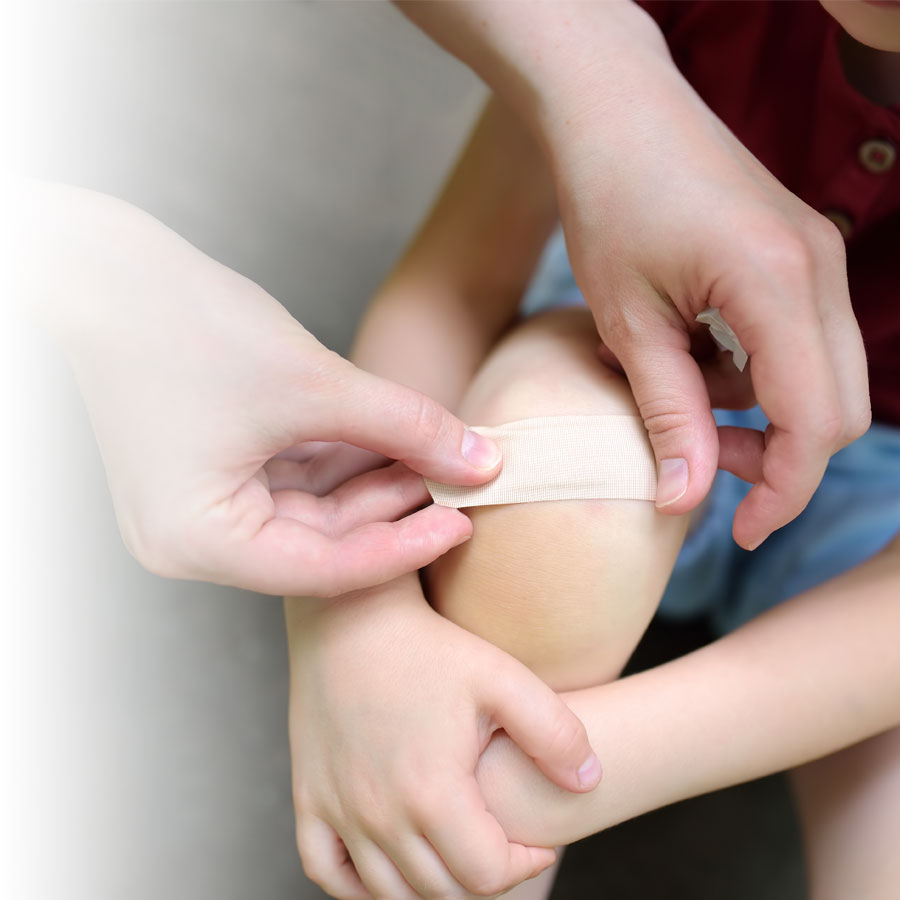Debunk the myths! Clean, treat and protect: three simple steps for treating minor scrapes, burns and cuts. Follow this guide.
A few myths about the care provided to minor wounds
When you think of first aid, you sometimes think of small wounds, including minor scrapes, burns and cuts, or other small injuries, which most often have no lasting consequences. However, regardless of their nature, it is important to treat these injuries correctly in order to avoid complications such as infection or poor healing.
There are several ongoing myths about how to treat minor wounds. Here are a few of them.
A wound heals best when left to "breathe" or air out.
WRONG - It will heal best if it is covered and protected.
The best product to disinfect a wound is hydrogen peroxide.
WRONG - Hydrogen peroxide is not recommended as a first choice for disinfection.
Alcohol is an excellent wound disinfectant.
WRONG - Alcohol is recommended for disinfecting objects such as medical instruments, but it’s an irritant for damaged skin.
Care in 3 steps
Clean
This cleaning step, also called "disinfection," is crucial. It removes the debris and dirt that may be lodged in the wound and prevents the accumulation of bacteria that could cause infection. Normal saline (a 0.9% solution of water and salt) is one of the best choices for cleaning a wound. However, you can also clean a wound with water and a mild, unscented soap.
Antiseptics (disinfectant products) are generally not recommended because some of these products may compromise wound healing. However, if you want to use a product to disinfect a wound, chlorhexidine-based products are the most effective.
Treat
It may be useful to apply an antibiotic product on the wound after cleaning it, but before covering it. Such products are sold as creams or ointments. They prevent the growth of bacteria that may become lodged in the wound and cause infections or impede healing. These products also prevent the dressing from adhering to the wound and stop dry crusts from forming.
Protect
One of the best ways to promote wound healing is to use a dressing to cover the wound. This not only protects the wound from outside contaminants, but also provides a moist environment that will accelerate healing. There is a wide range of dressings on the market, available in different sizes and shapes.
The choice of dressing depends on several factors, including the type of wound, its size, its depth, and the preferences and lifestyle of the person. With such a wide array of products, the task of selecting the appropriate one can be quite daunting. When in doubt, speak to your pharmacist. All dressings must be changed regularly so the wound stays clean.
Speak to your pharmacist for additional information about first aid for minor injuries.
